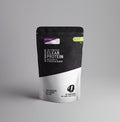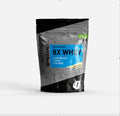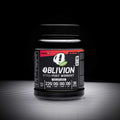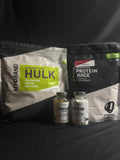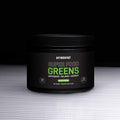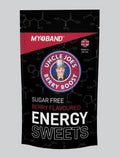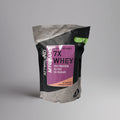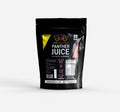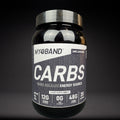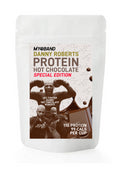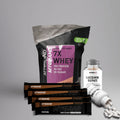Understanding the benefits of spices
Posted by PROPROTEIN LTD ADMIN

One of the many benefits of home cooking is being able to add spices in quantities that suit you! So why not learn a little bit about the benefits of the spices you add to your food? We have added a recipe at the end of this blog including all of the spices explained within this blog so you can begin to learn how to start using (and getting the benefits of) these spices straight away!
Spices we are going to look at:
- Smoked paprika
- Ground Cumin
- Turmeric
- Thyme
Smoked Paprika

Smoked Paprika has a vibrant shade of red which has made it one of the most common spices added to a range of cuisines, examples including Spanish, Mexican and Hungarian. The vibrant colour comes from its ingredients of dried peppers from the Capsicum Annuum family including grounded chilli peppers and bell peppers. As Smoked Paprika’s ingredients come from vegetables when one tablespoon (6.8g) was analysed through a nutrition analysis software (Nutritics), it is naturally high in Vitamin A (19% of daily intake), Vitamin B6 (9% of daily intake) Vitamin E (13% of daily intake) and Iron (8% of daily intake).
Studies show that Vitamin A is beneficial in a wide range of processes in the body including vision, reproduction, immune response and cell differentiation (2). The foods that harbour the most Vitamin A are eggs, Liver and also carotenoids (pigments) found in orange vegetables such as peppers. The high Vitamin A content in the pepper’s pigment is the reason as to why the paprika has such a vivid colour and high Vitamin A content (2).
Vitamin B6 is a great addition to have included within the spice, as it allows the body to utilise the protein and carbohydrates in the diet, and aids the body to create haemoglobin which is responsible for carrying oxygen in the red blood cells (3). Studies also show that Vitamin B6 enhances magnesium’s role in stress reduction compared to when magnesium is absorbed without Vitamin B6 (4).
Vitamin E has many beneficial roles within the body, as it is a lipid-soluble antioxidant there have been studies to show Vitamin E lowers cholesterol and be used as an anti-cancer substance (5). It has anti-cancer properties as it inhibits cancerous activities and has anti-inflammatory properties (5).
Iron is responsible for the creation of haemoglobin as iron is used for the oxygen to bond and break bonds with, to be able to carry and release the oxygen around the body and to the muscle cells (6).
Ground Cumin

Ground Cumin is created by grinding up cumin seeds, the common variety is a brown-yellow colour however there are other colours such as black, green and white. Whole cumin seeds are often found in Indian cuisine whereas ground cumin is common in Mexican and Middle Eastern cuisines as well as barbecue sauce and baked beans! When a tablespoon (6.7g) of cumin was put through the Nutritics software, it was high in Iron (32% of recommended intake), Manganese (11% of recommended intake) and Magnesium (7% of recommended intake) (1).
Similarly to smoked paprika, having a spice high in iron is beneficial for the haemoglobin in the red blood cells for carrying oxygen (6).
A high level of manganese is beneficial as it is essential for a range of different enzymatic proteins, without manganese they would not function to achieve functions such as enzymes in the urea cycle (production of urine). There is also interest in the potential role of manganese in neurological diseases such as brain tumours and Alzheimer's disease however there is not enough evidence for this to be concluded yet (7).
Magnesium is an advantageous mineral to have within the diet as it has many processes for which it is a co-factor (helps the reaction to work)(8). More specific uses of magnesium are muscle movement, blood pressure, the creation of DNA, new proteins and RNA (8). When magnesium levels are not high enough it can be associated with the development of chronic diseases such as type II diabetes and cardiovascular disease (8).
Turmeric

Turmeric is a very popular spice in Asian cuisines as well as being used as a medicine in dermatology (skin) and prevention/cure of diseases (9). Turmeric is made out of a plant called Curcuma longa L which is grown mainly in India. There are two main types of turmeric grown in India, “Madras” which has a vibrant yellow colour which is popular amongst British and Middle Eastern populations and “Alleppey” which is frequently used in the United States for food colouring and spice (9). On the Nutritics software, one tablespoon (6.8g) contained 19% of the recommended Iron intake, 13% of the recommended intake of manganese and 10% of the recommended potassium intake (1). The Iron and manganese contain the same benefits seen in ground Cumin.
Potassium has many roles within the body including reducing the risk of kidney stones, bone health, maintaining the potassium to sodium levels which are strongly associated with cardiovascular disease risk(10). In western diets, the consumption of fruit and vegetables are significantly lower, therefore, the population’s potassium is low (potassium is found in fruits and vegetables) and there has been an increase in sodium levels from excess fast foods being consumed (10). Consequently, there will be an increased risk of cardiovascular disease if eating habits do not change, a spice like turmeric could help to even out the potassium to sodium ratio which will in turn decrease disease risk (10).
Dried Thyme

Thyme is a herb that is in the mint family, often used in Mediterranean cuisine to add an earthy flavour. When one tablespoon (6.8g) of Dried Thyme was analysed, it presented 24% of daily recommended iron intake, 11% of recommended Manganese intake and 6% of the recommended Calcium intake (1). Dried Thyme is like the ground cumin with the high percentages of Iron and Manganese providing their benefits.
Calcium has a well-known benefit of bone health and Calcium homeostasis within the body where it couples with Vitamin D to extract some calcium out of the bone into the blood when blood Calcium is low and to store more Calcium within the bone when the blood calcium is too high in order to maintain the blood calcium levels (11). It is also key to remember that a large proportion of calcium we receive is through drinking water as the calcium is a dissolved mineral in tap waters (11).
A recipe that uses all these spices and herbs is the following Seafood paella, that encompasses the Spanish cuisine whilst providing a variety of flavour through the spices and different components and textures of the different food groups. Furthermore, the seafood could be replaced with meats such as chicken, chorizo or beef for a different flavour or for a vegan alternative, smoked tofu or add chopped cashew nuts to suit all budgets, food preferences and choices.
Seafood paella

- Low-calorie cooking spray
- 1 onion, chopped
- 100g button mushrooms, sliced
- 350g Cooked seafood mix
- 3 garlic cloves, crushed
- 2 tsp smoked paprika
- 1½; tsp ground cumin
- 1 tsp turmeric
- 1 tsp dried thyme
- 350g long-grain rice/ paella rice
- 200g of passata
- 1 tbsp tomato purée
- 750ml boiling vegetable stock
- 100g frozen peas
- Lemon wedges, to serve
Method
- Spray a large, deep non-stick pan with low-calorie cooking spray and place over a medium heat. Add the onion and mushrooms. Fry for 5 minutes, adding a little water if needed.
- Stir in the garlic, spices and thyme, and seafood mix and cook for a further 2 minutes.
- Add the rice to the pan and stir until the grains are coated in the spices. Stir in the passata, tomato purée, and stock and bring to the boil. Cover with a tight-fitting lid, turn the heat to low and cook for 15 minutes. Make sure to check/stir the mixture every 5 minutes to prevent the rice sticking.
- Add the peas to the rice without stirring them in and replace the lid. Cook for 5 minutes, then remove from the heat. Keep the lid on the pan and leave to stand for 10 minutes.
- Stir the rice, season lightly and serve hot with lemon wedges.
Nutritics for 1 portion (recipe is for 4 people)
- Energy (kcal): 267
- Carbohydrates (g): 36
- Of which sugars (g): 7.6
- Fat (g): 3.2
- Saturated fat (g): 0.6
- Protein (g): 20
- Fibre (g): 6.1
- Salt (g): 2.3
References
(1) Nutritics. (2020). Retrieved from https://www.nutritics.com/app/#
(2) Debelo, H., Novotny, J. A., & Ferruzzi, M. G. (2017). Vitamin A. Advances in nutrition (Bethesda, Md.), 8(6), 992–994. https://doi.org/10.3945/an.116.014720
(3) Vitamins and minerals - B vitamins and folic acid. (2020). Retrieved 24 August 2020, from https://www.nhs.uk/conditions/vitamins-and-minerals/vitamin-b/
(4) Pouteau, E., Kabir-Ahmadi, M., Noah, L., Mazur, A., Dye, L., Hellhammer, J., Pickering, G., & Dubray, C. (2018). Superiority of magnesium and vitamin B6 over magnesium alone on severe stress in healthy adults with low magnesemia: A randomized, single-blind clinical trial. PloS one, 13(12), e0208454. https://doi.org/10.1371/journal.pone.0208454
(5) Mohd Mutalip, S. S., Ab-Rahim, S., & Rajikin, M. H. (2018). Vitamin E as an Antioxidant in Female Reproductive Health. Antioxidants (Basel, Switzerland), 7(2), 22. https://doi.org/10.3390/antiox7020022
(6) Hemoglobin and Functions of Iron. (2020). Retrieved 24 August 2020, from https://www.ucsfhealth.org/education/hemoglobin-and-functions-of-iron
(7) Horning, K. J., Caito, S. W., Tipps, K. G., Bowman, A. B., & Aschner, M. (2015). Manganese Is Essential for Neuronal Health. Annual review of nutrition, 35, 71–108. https://doi.org/10.1146/annurev-nutr-071714-034419
(8) Gröber, U., Schmidt, J., & Kisters, K. (2015). Magnesium in Prevention and Therapy. Nutrients, 7(9), 8199–8226. https://doi.org/10.3390/nu7095388
(9) Gopinath, H., & Karthikeyan, K. (2018). Turmeric: A condiment, cosmetic and cure. Indian journal of dermatology, venereology and leprology, 84(1), 16–21. https://doi.org/10.4103/ijdvl.IJDVL_1143_16
(10) Weaver C. M. (2013). Potassium and health. Advances in nutrition (Bethesda, Md.), 4(3), 368S–77S. https://doi.org/10.3945/an.112.003533
(11) Vannucci, L., Fossi, C., Quattrini, S., Guasti, L., Pampaloni, B., Gronchi, G., Giusti, F., Romagnoli, C., Cianferotti, L., Marcucci, G., & Brandi, M. L. (2018). Calcium Intake in Bone Health: A Focus on Calcium-Rich Mineral Waters. Nutrients, 10(12), 1930. https://doi.org/10.3390/nu10121930
TAGS:
